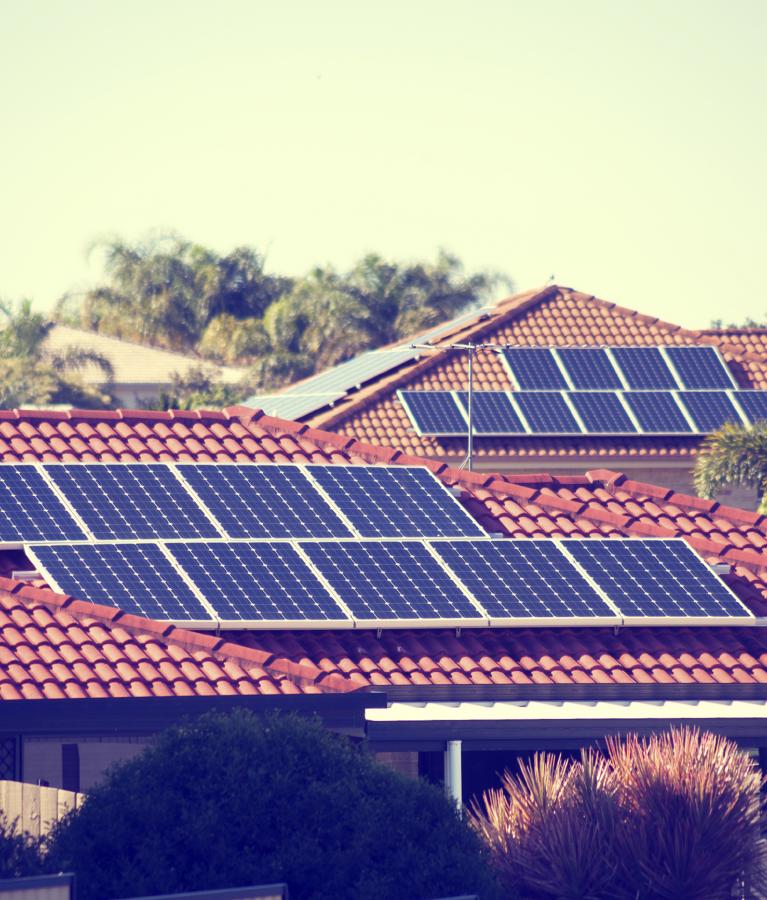Over the last six years, solar power adoption in Australia has grown rapidly and the country is now leading the world in household solar penetration1. This growth has seen Australia become a popular test ground for small-scale battery storage, and with excellent solar resources, the country is predicted to become one of the world’s largest markets for battery storage2.
Here’s a look at two local initiatives already underway to maximise the potential of solar battery storage.
Sharing the power
A collection of 14 homes in an east Melbourne suburb have started a trial to collectively generate, store and share energy using rooftop solar panels and battery storage. The trial is the first of its kind in an established urban area.
Each home had a solar system installed with 10 kilowatt hours of battery storage. The energy generated by the homes will be shared via a mini-grid set up by energy distribution company AusNet Services.
For the first year the homes will be self-sufficient, using their self-generated solar power with the grid as a back-up when needed. Over this period their energy consumption will be monitored. For the last stage of the trial, AusNet Services will implement the mini-grid system and share the stored power between the houses, based on their individual needs and those of the network.
AusNet Services say their aim is to test the feasibility of developing systems that give their customers the ability to share their self-generated energy within their local area - lowering their electricity bills and potentially taking them off the grid3.
ACT-ing first
The ACT Government is leading the way in encouraging the adoption of the technology with thousands of homes and businesses in Canberra set to get access to subsidised solar battery storage.
This will be the largest subsidised rollout outside of Germany, who set the global standard by offering incentives of 30 per cent off the installation costs of solar with battery storage, or to add storage to existing solar systems4.
The scheme will see 36 megawatts of subsidised battery storage introduced over the next four years to more than 5,000 homes and businesses that already have a solar system installed, through a renewables auction program5.
These are just two examples of the many initiatives being undertaken countrywide to maximise the potential of battery storage technology.
Thinking about making the switch to solar power with battery storage? Contact EnergyAustralia to find out about your options.




